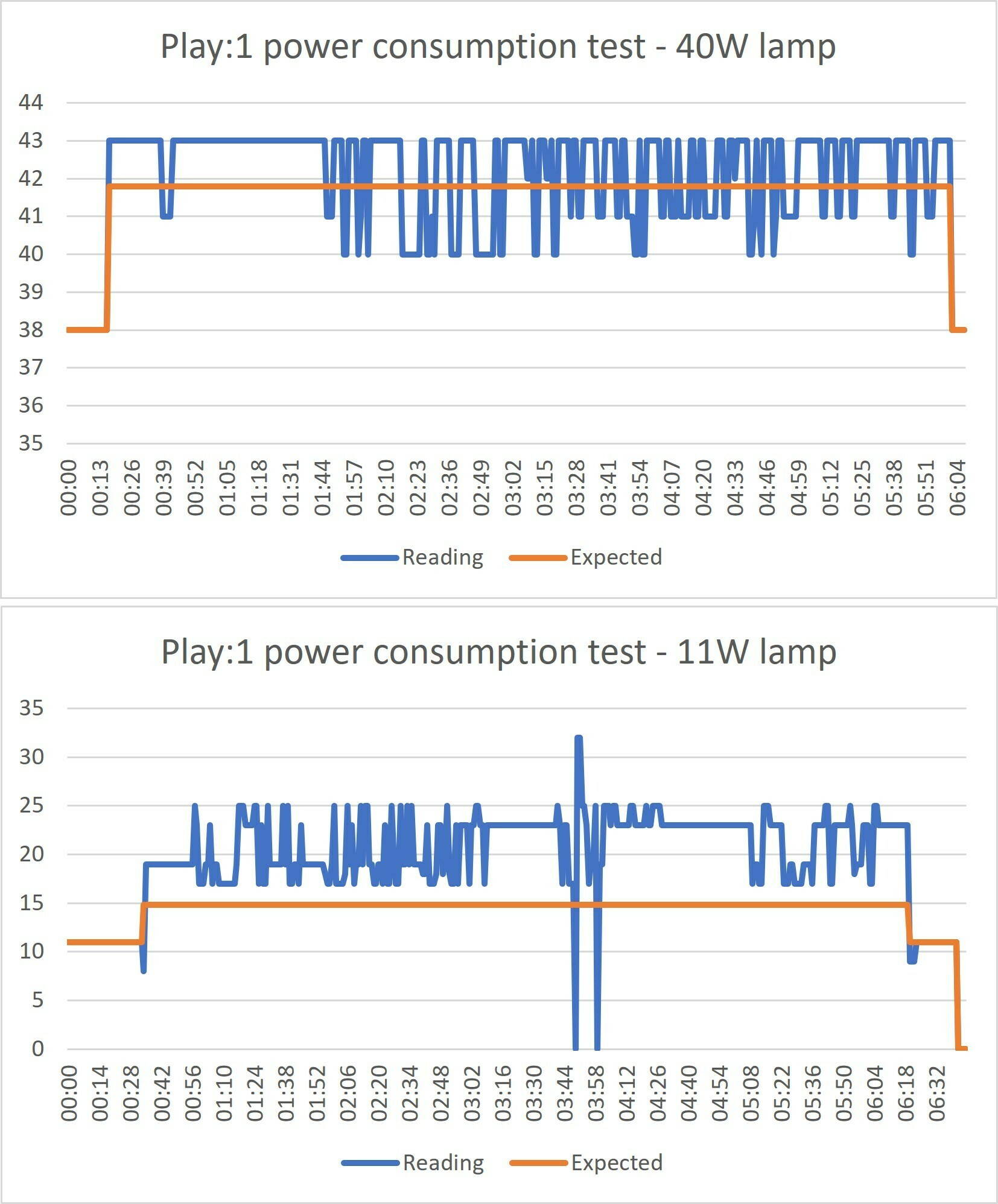Hi Sonos community
I have a bunch of Sonos products and like most responsible home owners I suddenly got an interest to get my energy consumption under control.
Using a electricity meter (a dedicated power meter, not a smart plug) I find that my Sonos speakers consume roughly 15W (S1), 18W (S3) and 20W (S5). It is a lot higher than mentioned on https://support.sonos.com/s/article/256 but when I look more careful (in Home Assistant) the devices are in "paused" state, not "idle"... Hm, perhaps that is my problem.
The same article as above explains how/when the devices turn into "idle" (and reach the advertised low energy consumption state) but regardless of what I do I can't observe that ever happening. None of the devices are playing anything, I wait for 3 minutes but nothing happens... I wait for 30 minutes, still nothing. I don't have any surround system which can cause a longer delay accordig to the article. When I look at the state history (in Home Assistant again) I can't see any device ever going idle - not even when we leave the house for vacation.
It does not seem to change anything if I close all clients/apps that control the system.
The only thing I can think of is the Home Assistant integration, could that possibly keep the system from going idle??
Any ideas?
---------------------------------
Play:3: SonosA
Sonos OS: S1
Version: 11.5 (build 571231030)
Maskinvaruversion: 1.8.1.3-2.0
Serie-ID: A100
Play:1: SonosB
Sonos OS: S1
Version: 11.5 (build 571231030)
Maskinvaruversion: 1.8.3.7-2.0
Serie-ID: A101
Play:1: SonosC
Sonos OS: S1
Version: 11.5 (build 571231030)
Maskinvaruversion: 1.8.3.7-2.0
Serie-ID: A101
Play:1: SonosD
Sonos OS: S1
Version: 11.5 (build 571231030)
Maskinvaruversion: 1.8.3.7-2.0
Serie-ID: A101
Play:5: SonosE
Sonos OS: S1
Version: 11.5 (build 571231030)
Maskinvaruversion: 1.17.4.1-2.0
Serie-ID: B100
Play:1: SonosF
Sonos OS: S1
Version: 11.5 (build 571231030)
Maskinvaruversion: 1.8.3.7-2.0
Serie-ID: A101
Play:3: SonosG
Sonos OS: S1
Version: 11.5 (build 571231030)
Maskinvaruversion: 1.8.1.3-2.0
Serie-ID: A100
Play:1: SonosH
Sonos OS: S1
Version: 11.5 (build 571231030)
Maskinvaruversion: 1.20.1.6-2.1
Serie-ID: A200
Play:1: SonosI
Sonos OS: S1
Version: 11.5 (build 571231030)
Maskinvaruversion: 1.20.1.6-2.1
Serie-ID: A200
Play:1: SonosJ
Sonos OS: S1
Version: 11.5 (build 571231030)
Maskinvaruversion: 1.20.1.6-2.2
Serie-ID: A200
Play:5: SonosK
Sonos OS: S1
Version: 11.5 (build 571231030)
Maskinvaruversion: 1.17.4.1-2.0
Serie-ID: B100



